How to Create Your Influencer Media Kit (2025 + Examples)
Create your influencer media kit online in minutes. Build a professional kit that showcases your work and wins brand partnerships.

An influencer media kit is a must-have marketing tool to secure brand deals and partnerships, no matter your follower size. You don’t need millions of followers to land paid brand collaborations, but you do need a professional media kit. Brands want to see your engagement stats and audience insights to understand why you’re a good fit.
A media kit consolidates your work portfolio, audience demographics, achievements, and past brand collaborations into one clear, easy-to-read document. It helps brands quickly grasp who you are and what makes you unique.
Having a well-designed media kit saves time, reduces back-and-forth emails, and creates a strong first impression. Whether you’re just starting out or growing your audience, an optimized media kit is key to unlocking more brand partnership opportunities.
What is an Influencer Media Kit?
An influencer media kit is a professionally designed document or digital portfolio that highlights your brand, audience, and past collaborations. It serves as a marketing tool to showcase your value to potential brand partners.
Typically, it includes your bio, audience demographics, engagement metrics, portfolio examples, rates, and contact information. A well-crafted media kit helps brands quickly assess your fit for campaigns and sponsorships, making your collaboration proposals more compelling and professional.
Why Is an Influencer Media Kit Important?
You will need a professional influencer media kit for several reasons. First, it establishes your credibility. Presenting yourself professionally reflects your brand identity and shows how serious you are about your work. It highlights your achievements.
Moreover by showcasing key metrics like your total followers, average engagement rates, audience demographics, your rates for services, and previous collaborations, you give brands a clear picture of your influence and reach. A media kit simplifies everything by gathering all the important information so brands can easily see why partnering with you is a great idea.
How a Compelling Media Kit Attracts Top Brand Deals
In the competitive world of influencer marketing, a compelling media kit is your secret weapon to stand out and attract the best brand deals. It’s more than just a document, it’s a powerful presentation of your personal brand, audience, and unique value.
A well-crafted media kit clearly communicates who you are, what you offer, and why brands should choose you over others. It highlights your key metrics such as follower count, engagement rates, and audience demographics, giving brands the confidence that their investment will reach the right people.
Moreover, a compelling media kit tells your story with professionalism and authenticity. It showcases your previous collaborations, content style, and partnership opportunities in a polished, visually appealing format that instantly builds trust.
Brands receive countless pitches daily, your media kit helps cut through the noise by delivering all essential information efficiently and attractively. This makes decision-making easier for brands and increases your chances of securing lucrative sponsorships and long-term partnerships.
Investing time into creating and regularly updating a compelling media kit can significantly boost your credibility and negotiation power, making you a sought-after influencer in your niche.
Should I Include Rates in my Influencer Media Kit?
Including your rates in your influencer media kit can be a strategic decision that impacts how brands perceive and approach you. Transparent pricing helps set clear expectations upfront, saving time for both you and potential partners.
By listing your rates for different services, such as sponsored posts, stories, or collaborations, you provide brands with a concrete understanding of your value and budget requirements. This transparency can build trust and demonstrate professionalism.
However, some influencers prefer to discuss rates privately to maintain flexibility for negotiation based on each campaign’s specifics. If you choose to omit rates, make sure to clearly communicate how brands can request a customized proposal.
Ultimately, whether you include rates depends on your personal preference and business approach. If you decide to add them, keep the pricing clear, reasonable, and aligned with your niche and audience size to attract serious brand deals.
What to Put in an Influencer Media Kit?
- Bio: A short introduction about who you are and your niche.
- Audience Insights: Details about your audience, including age, gender, and interests.
- Portfolio: Examples of your past work and links to collaborations.
- Rates: A clear list of your rates for services like sponsored posts or partnerships.
- Contact Information: How brands can contact you for partnerships.
Media Kit vs. Rate Card: Understanding the Difference
While both a media kit and a rate card are essential tools for creators, they serve different purposes.
Media Kit: A comprehensive presentation of your brand, audience insights, achievements, and collaboration history. It tells your story and builds your credibility.
Rate Card: A straightforward list of your pricing for various services, such as sponsored posts, stories, or collaborations. It focuses solely on costs and deliverables.
Many influencers include their rate card within their media kit for convenience, but knowing the difference helps you communicate professionally with brands and tailor your proposals accordingly.
Creating Your Influencer Media Kit
With CreatorsJet, you are just minutes away from creating an influencer media kit. Our platform makes the process seamless so you can focus on content creation. We take care of building a professional media kit that fits your brand. Your media kit stays up to date in real time and is easy to share with one link. Let’s dive into the tutorial!
Step 1: Create Your Account
Click the "Get Started" button in the top right corner to begin setting up your influencer media kit.

Step 2: Onboarding Process
Once you’ve created your account, a welcome message will greet you. Choose a username, profile picture, country, tags, and spoken language. When you’re ready, click "Finish" to complete the setup.
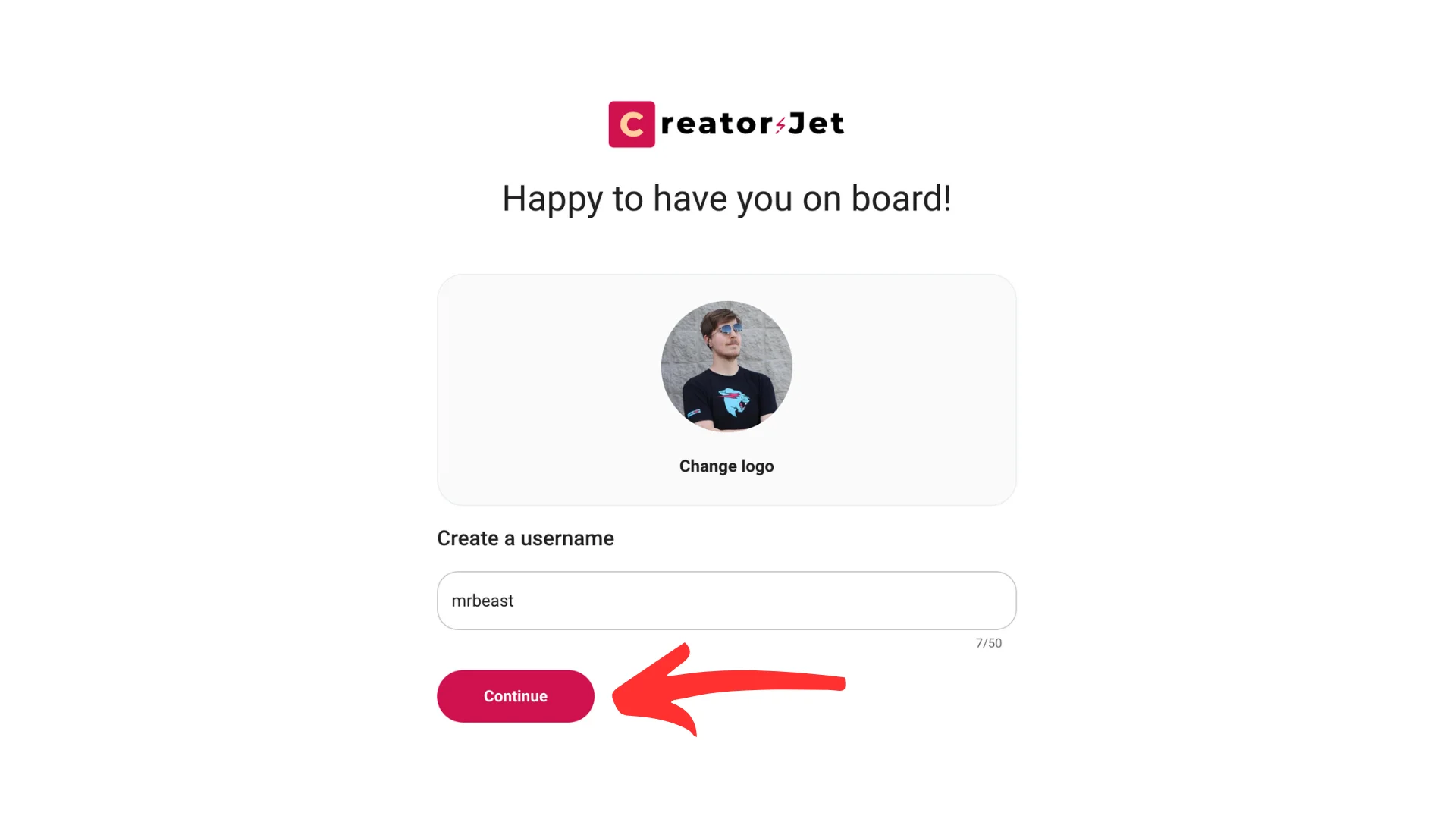
Step 3: Link Your Social Media Accounts
Click on "Add Social." This will open the Connect Socials section where you can choose a platform and enter your handle.
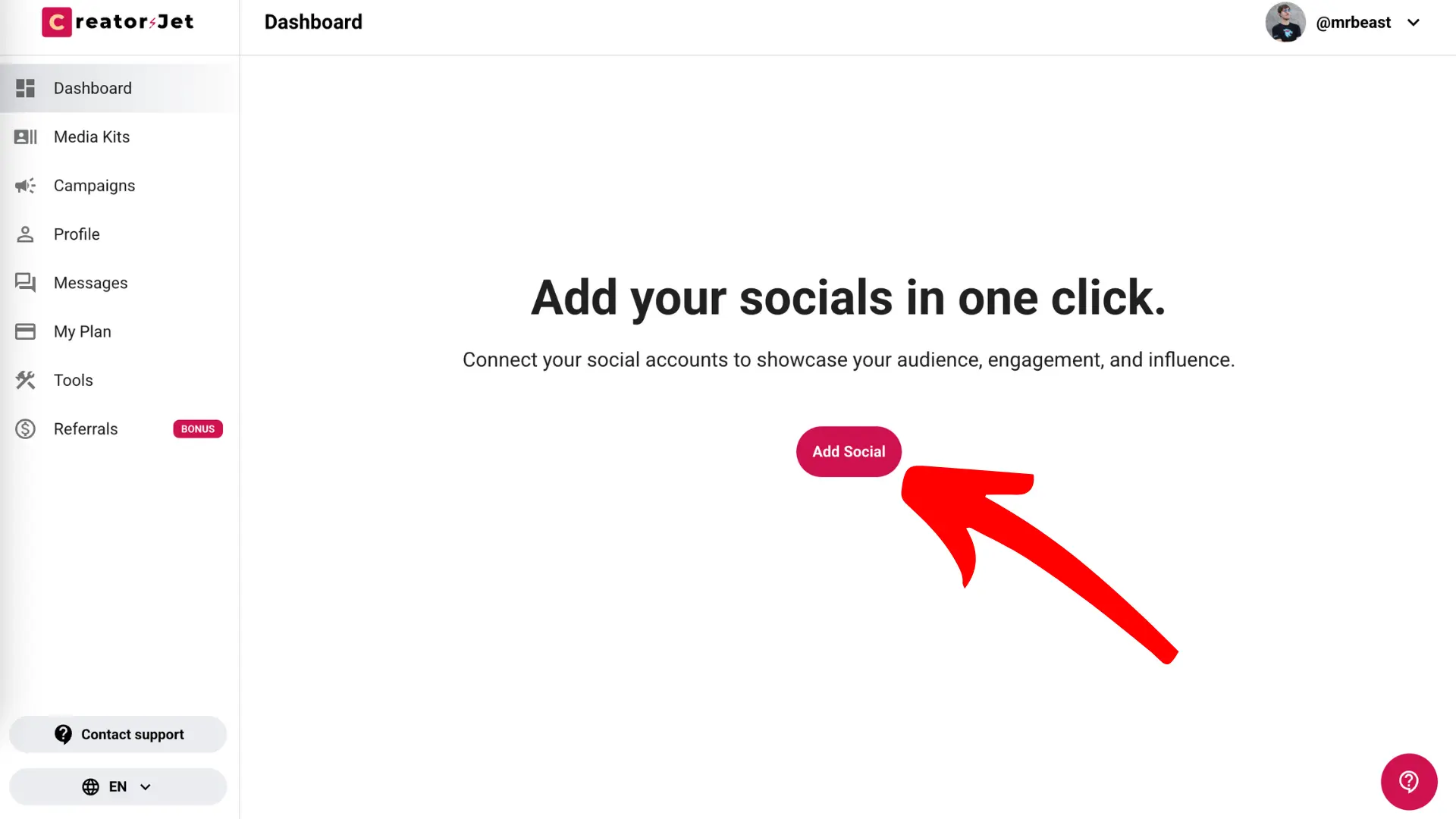
Select the platform, fill in your handle, and click "Add." Your social media account will now be connected to your CreatorsJet profile and available for your influencer media kit.
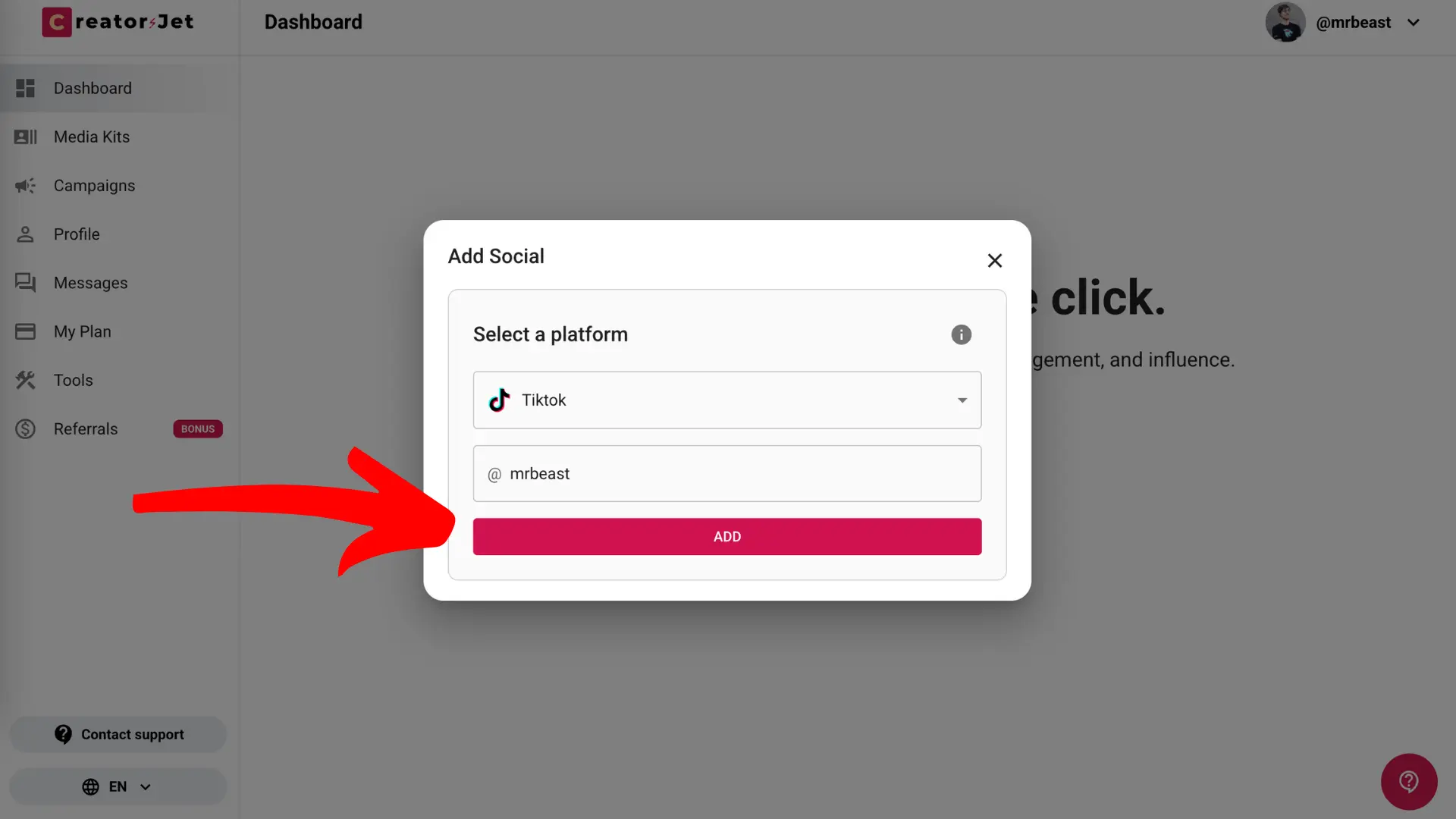
To provide granular details about your audience, including geographic location, age ranges, and gender distribution, simply click the edit icon next to each connected social account.
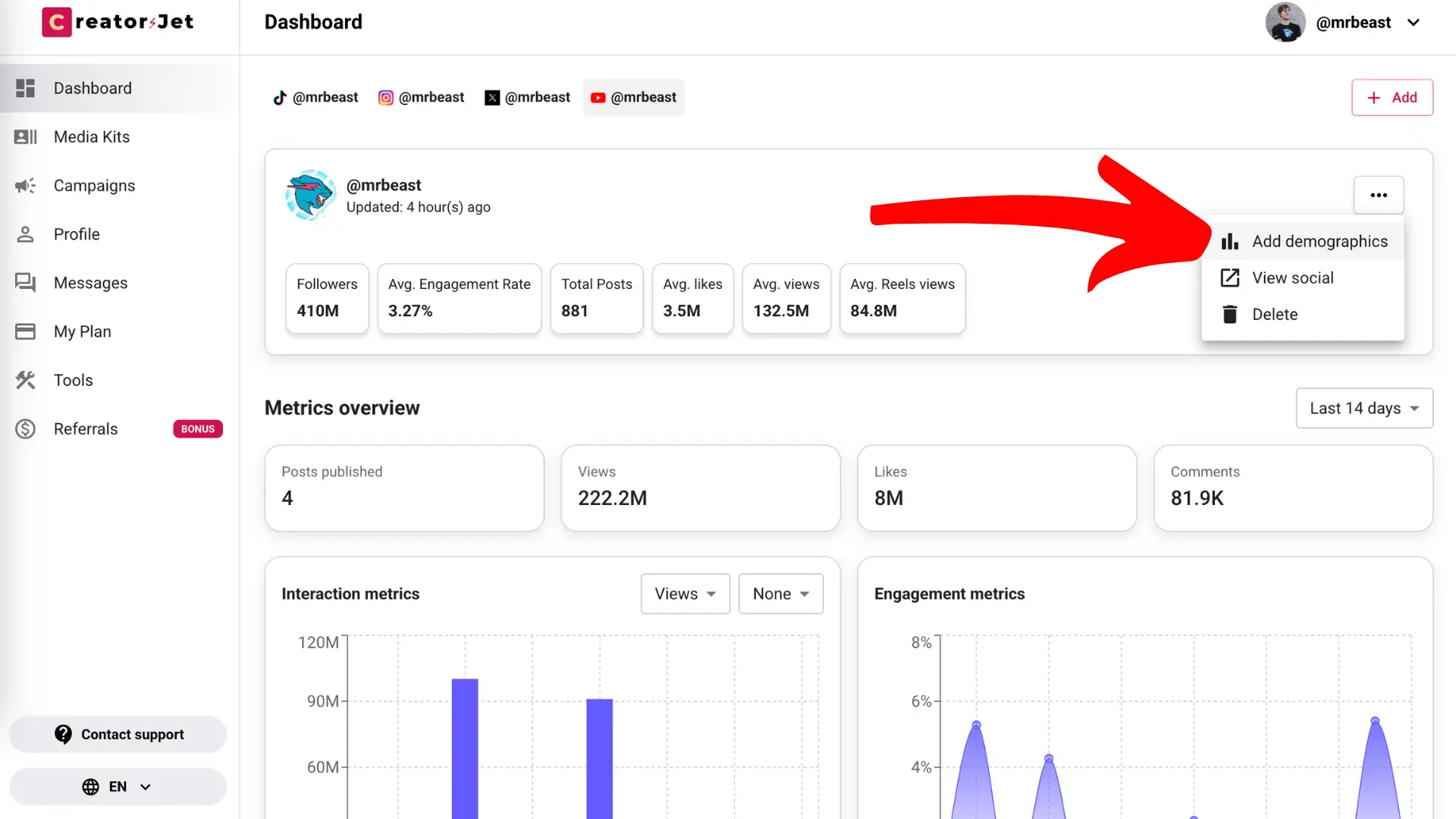
Step 4: Edit Your Media Kit
Now that you’ve linked your accounts, it’s time to edit your influencer media kit. Go to the "Media Kits" section in the sidebar to view and manage your kits.

From the Media Kits section, select the kit you want to edit and use the available options to customize its details and appearance.
You can also create a new kit from this section if you want to set up another influencer media kit.
Step 4.1: Customize Your Link
In the Custom Domain section, enter a custom link slug that is simple, easy to remember, and represents you. This will make it easier for people to find and recall your influencer media kit.
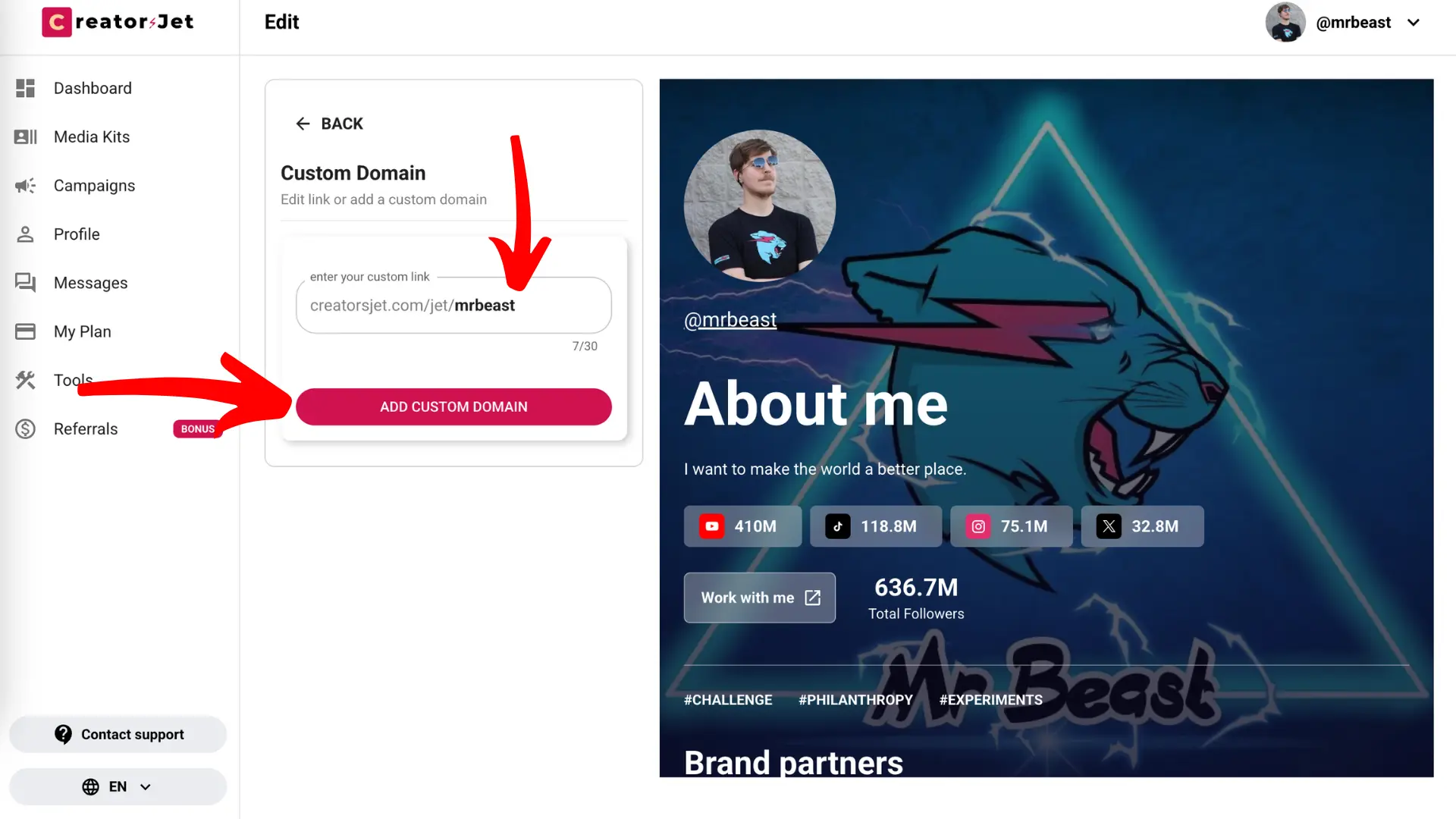
Step 4.2: Add a Custom Domain (Optional)
To personalize your influencer media kit even more, click "Add Custom Domain." Enter your custom domain and follow the instructions to update your DNS settings. When ready, click "Save" to apply the changes.
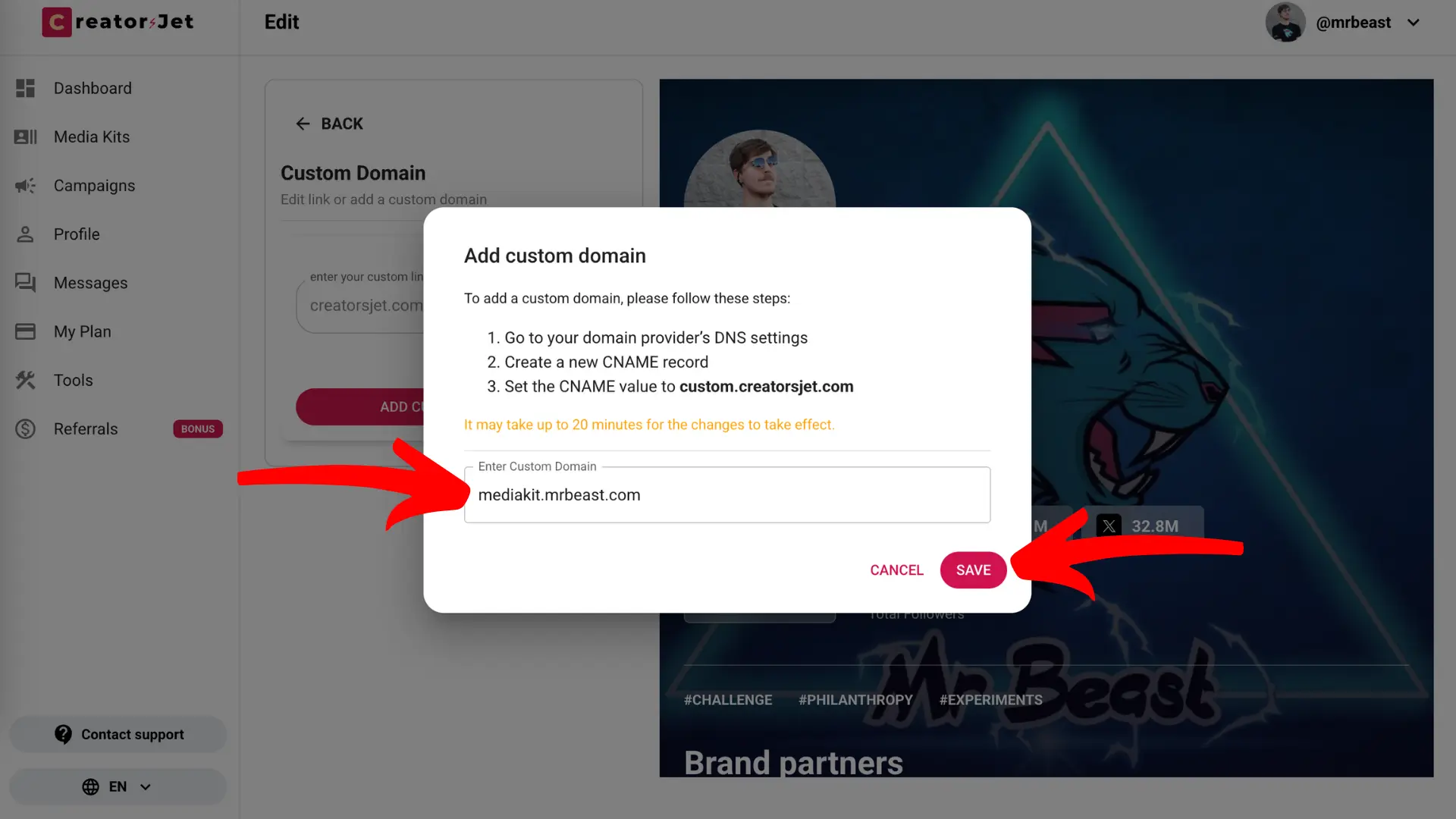
Step 4.3: Change or Remove the Cover Image
In the Customize Design section under Cover Image, you can upload a cover image you like. Click "Change cover image" to upload a new one, or click "Remove cover image" if you'd prefer not to have one.

Step 4.4: Edit Header Information
In the Header section, you can update your profile picture, adjust your media kit name, and add relevant tags that describe your content. This helps brands quickly understand your focus and style.

Step 4.5: Update Your About Me Section
In the About Me section, write a short bio that tells your story and add your contact email so brands can easily reach you for collaborations.
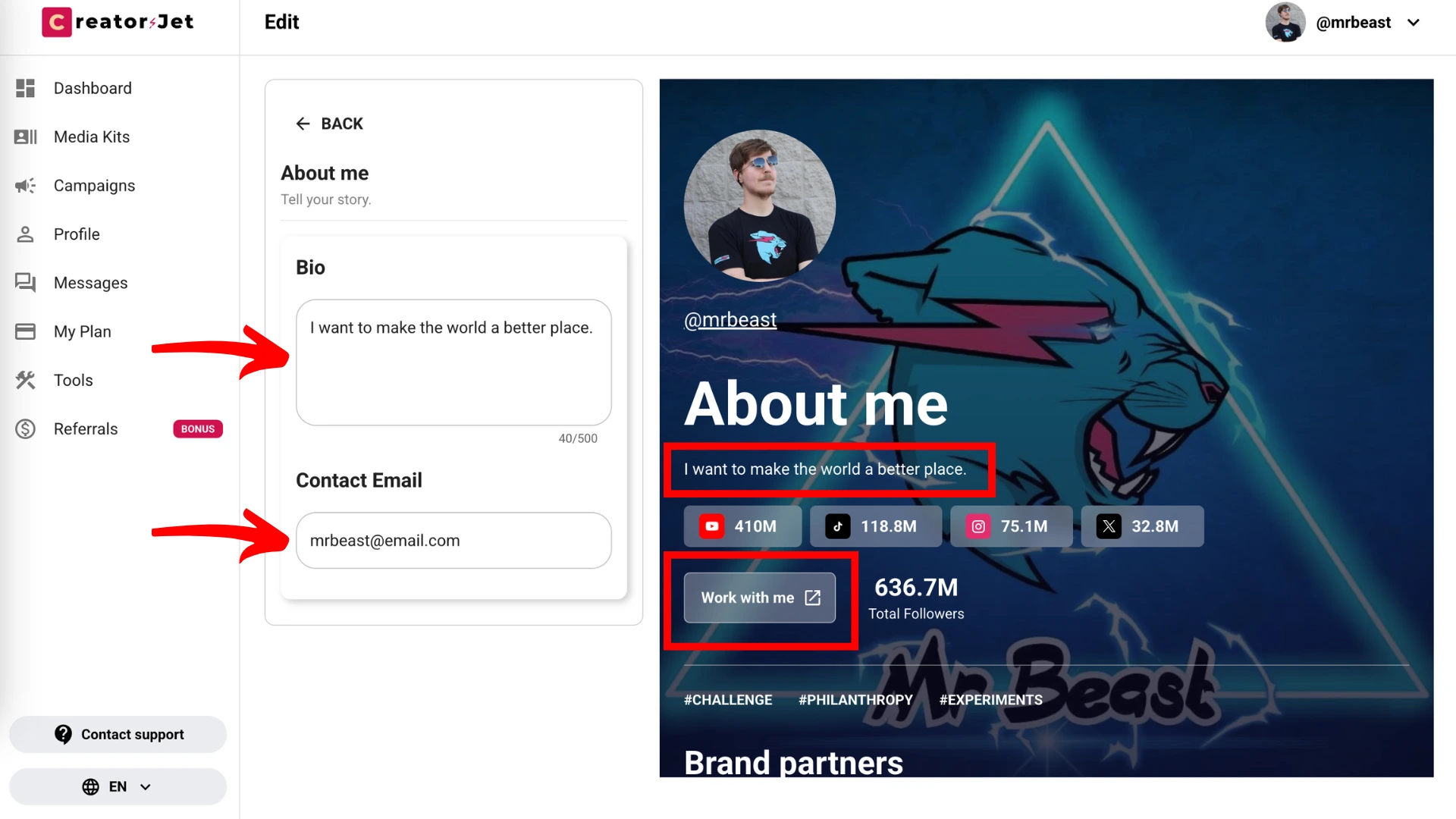
Step 4.6: Add Brand Partners
In the Brand Partners section, add the logos, names, and websites of brands you’ve worked with. This helps showcase your experience and build credibility with potential partners.
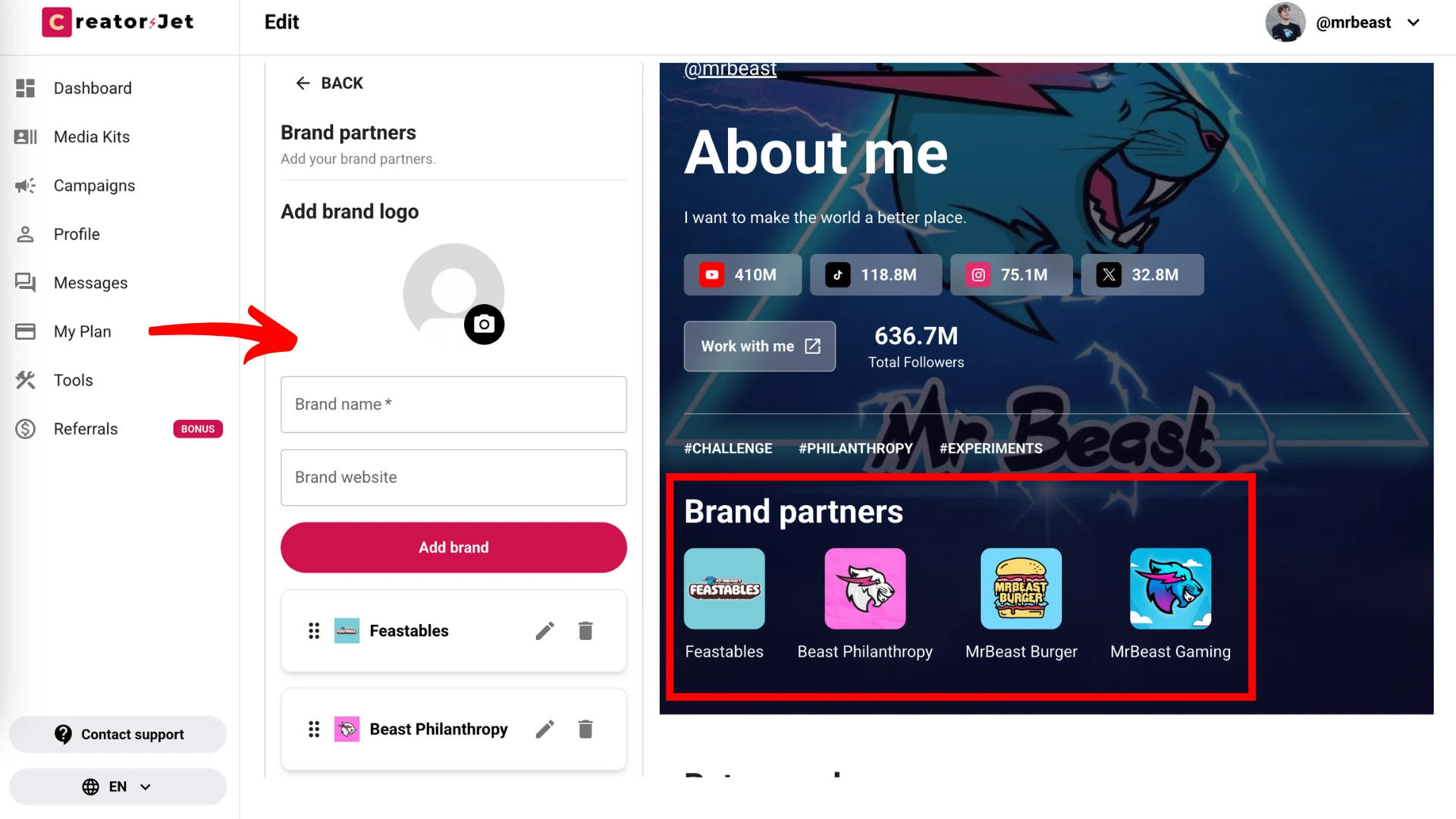
Step 4.7: Set Your Rates
In the Rates card section, list your services, add clear descriptions, and specify your rates and currency. This helps brands understand your offerings and what to expect when working with you.
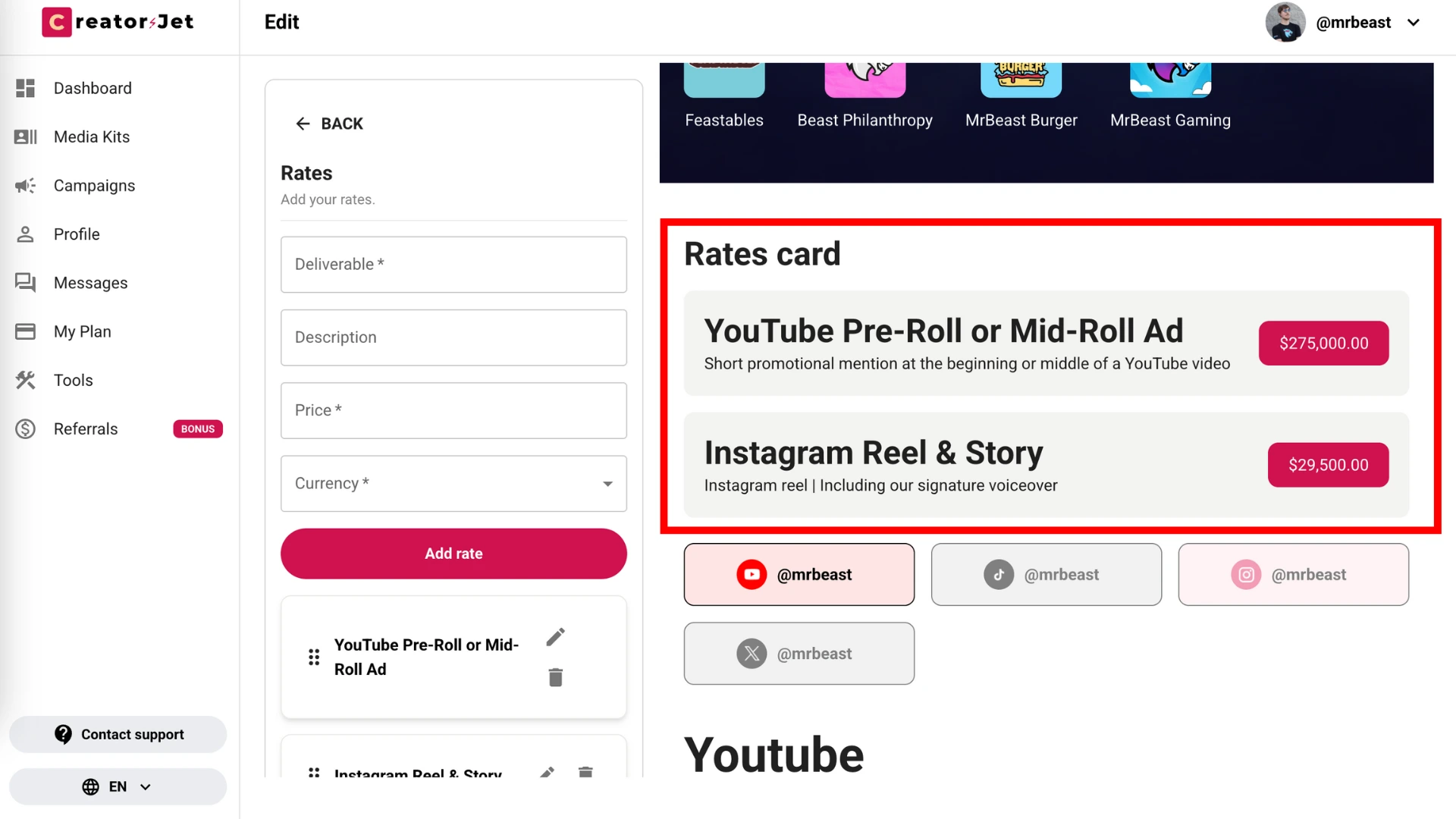
Step 4.8: Manage Socials
In the Add / Remove Socials section, you can add new social accounts or remove existing ones at any time. This keeps your influencer media kit fresh, accurate, and relevant for potential partners.
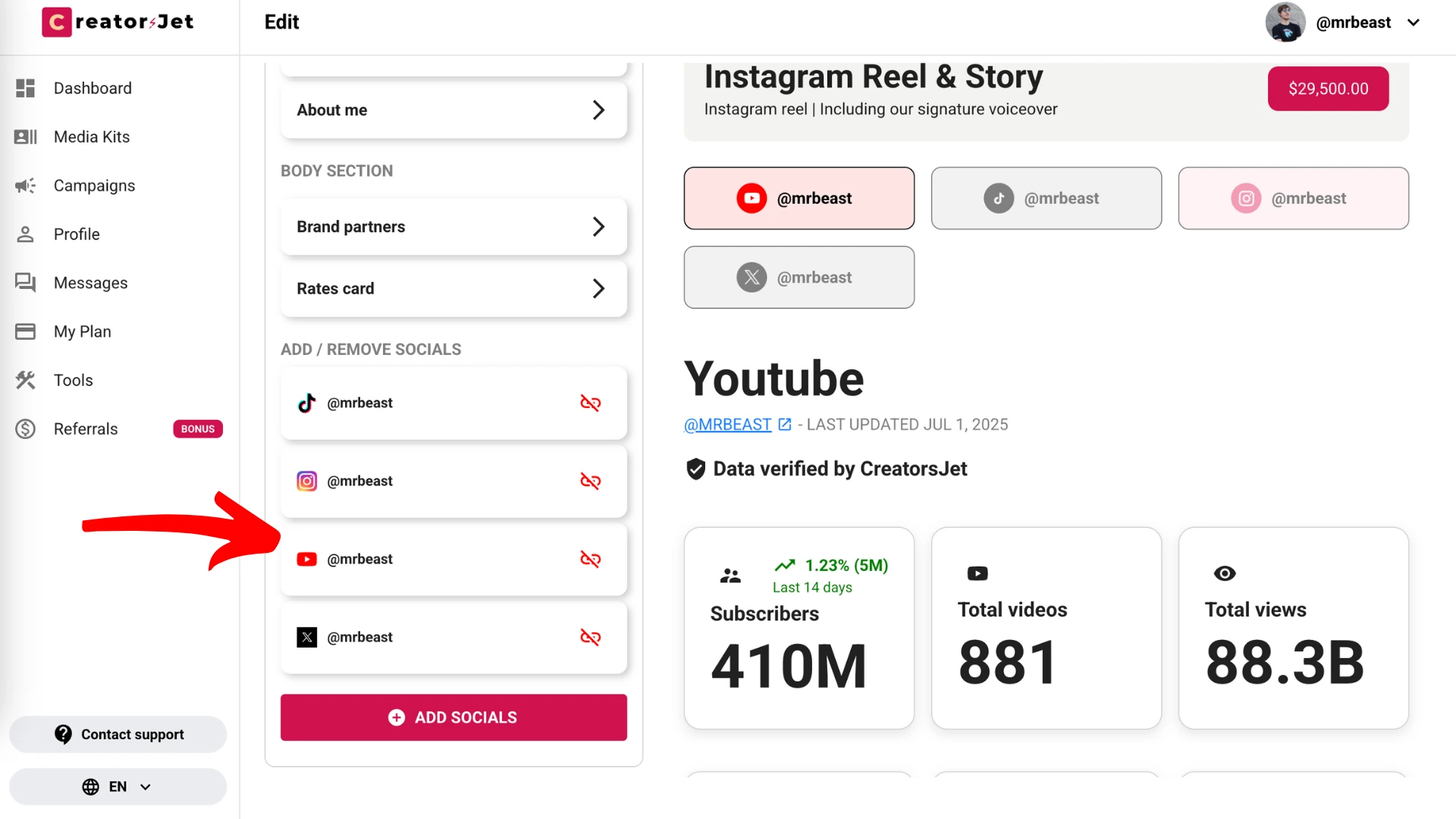
Step 5: Share Your Media Kit
Once your media kit is ready, click the Share icon to copy your link or share it directly on platforms like Facebook, LinkedIn, Twitter, and WhatsApp to reach potential partners.
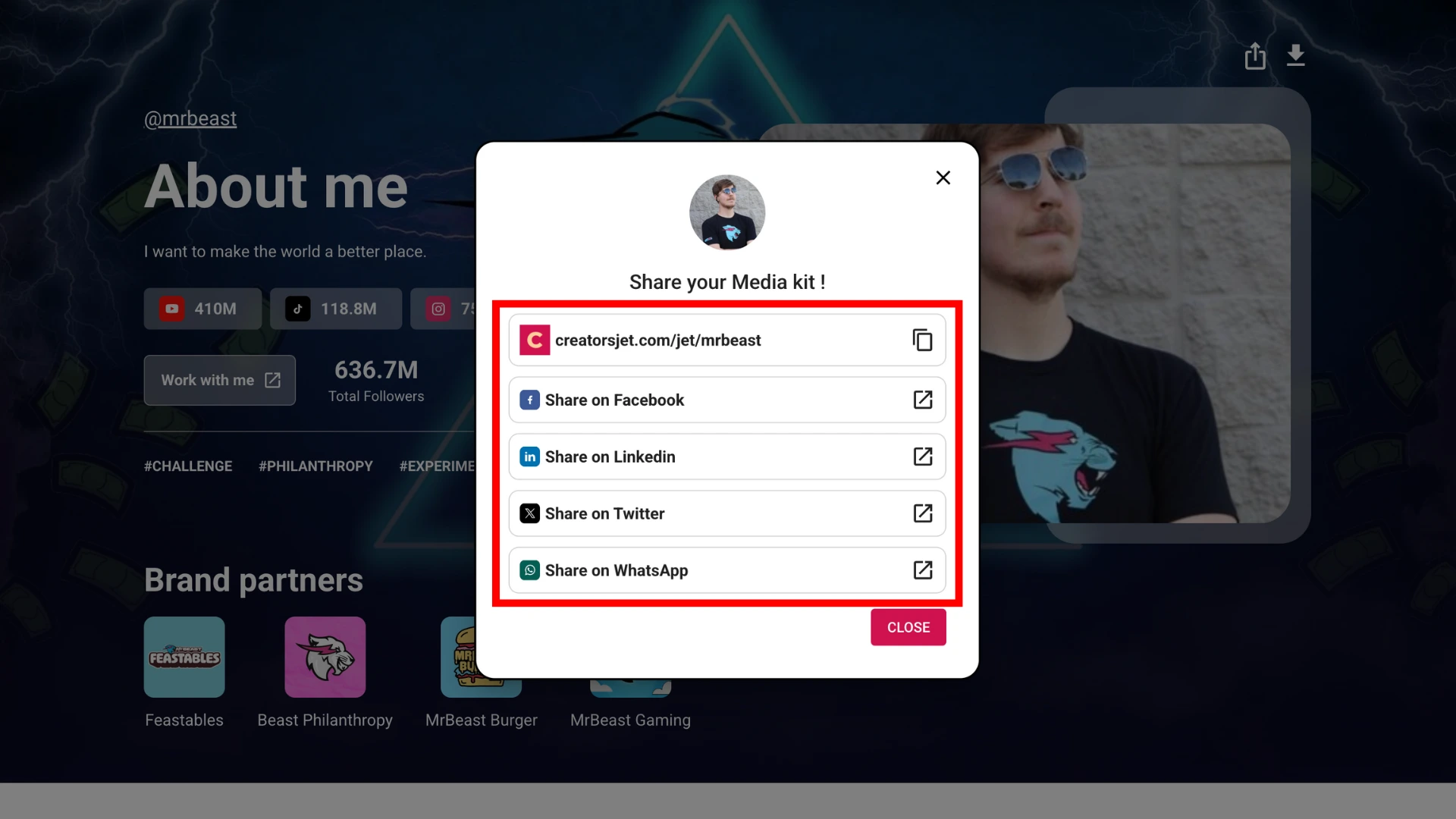
Step 6: Export to PDF
If needed, you can easily export your media kit as a professional PDF document. This allows you to share your influencer media kit offline or attach it directly in proposals, making your pitch even more compelling.
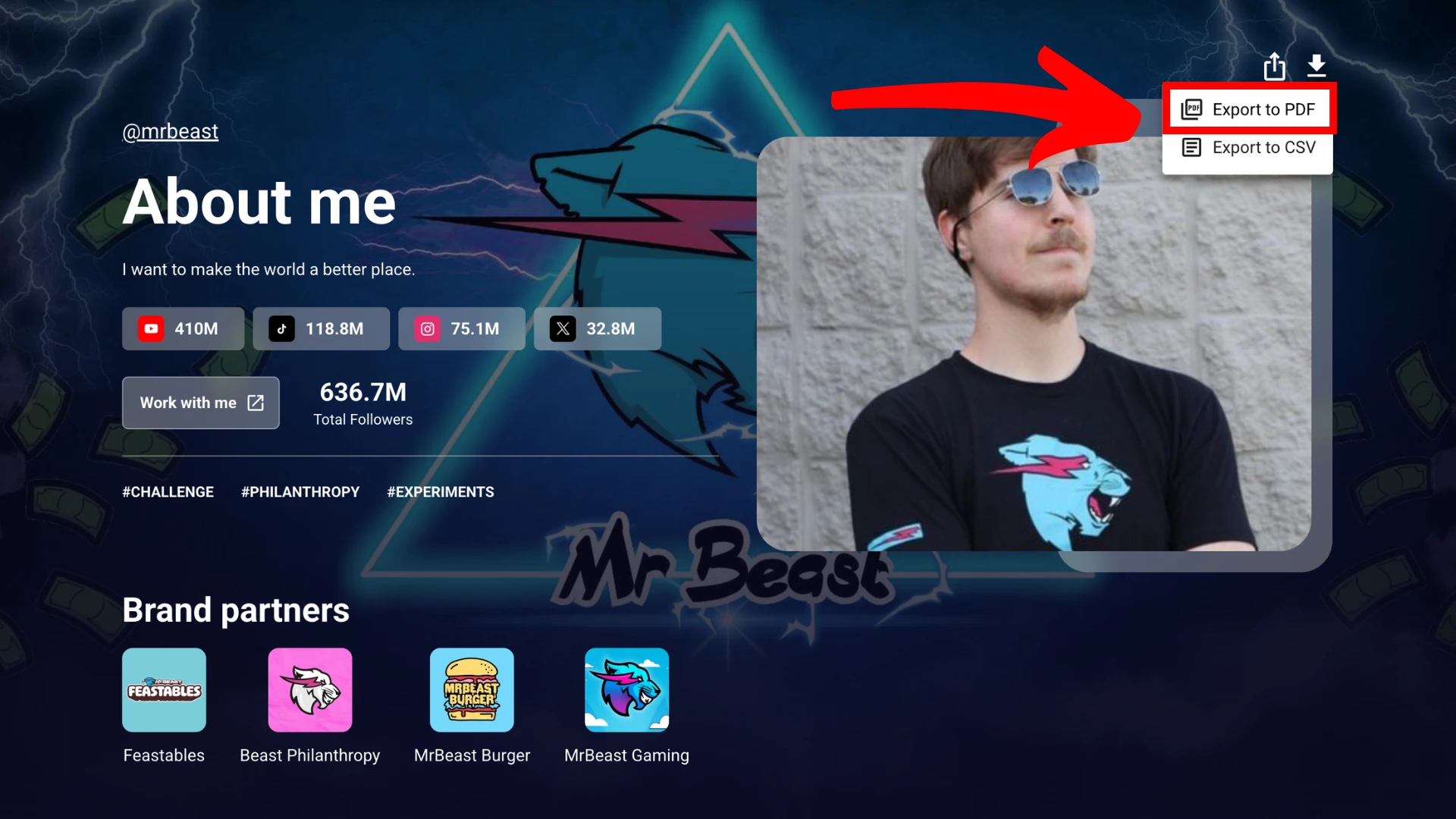
Best Influencer Media Kit Examples by Niche
What you include in your media kit depends on your niche. Here are smart examples from top-performing creators:
No matter your niche, your media kit is your chance to tell your unique story and showcase the value you bring to brands. Use these examples as inspiration to craft a media kit that stands out and opens doors to exciting partnership opportunities.
How to Send Your Influencer Media Kit to Brands
Having a polished media kit is just the first step, now you need to get it noticed by the right brands.
If you don’t have prior connections, a personalized cold email is often the most effective approach.
Start by researching brand contacts on their websites or LinkedIn pages, or use influencer platforms where brands and creators connect. Avoid generic mass emails, brands appreciate messages tailored specifically to them.
In your outreach, clearly explain why you admire the brand and how your audience matches their target market. Highlight your creativity and unique value to make a memorable impression.
Consider answering these questions in your pitch:
- Why this brand?
- What collaboration idea do you propose?
- How does your content align with their brand?
- Is there a specific need you can help them solve?
Leading with a strong campaign concept shows you’ve done your homework and sets you apart. Don’t just say “Here’s my media kit”, say “Here’s an exciting campaign idea to discuss, along with my media kit for more info.”
Keep your message concise, include all relevant links, and focus on building a genuine connection. This approach increases your chances of landing meaningful brand partnerships.
In brief
Creating a professional media kit is an essential step for influencers and digital creators who aim to attract brand collaborations. An effective media kit demonstrates your distinct style, comprehensive audience insights, and partnership opportunities, making you stand out in the digital marketplace.
With CreatorsJet, building your media kit is fast, intuitive, and efficient. Our platform automatically updates your social media statistics and performance metrics in real time, ensuring you always present the most accurate and compelling data. Focus more on content creation and less on manual updates.
Now that you understand the essentials of crafting an effective media kit, take action today to unlock new brand partnership opportunities. Remember, your media kit represents your personal brand, make it memorable and impactful!
As a special thank you for reading through, use the exclusive promo code "CREATEMEDIAKIT" at checkout to enjoy a discount on your first CreatorsJet subscription.
Create your customized media kit effortlessly with CreatorsJet
Stand out in the crowded influencer market with a professionally designed media kit from CreatorsJet. Seamlessly showcase your social media analytics, audience insights, and collaboration details with one click.
🚀 Create your professional media kit in minutes
✅ Automatically updated
💬 Share with just a click
free forever, with no credit card required.
